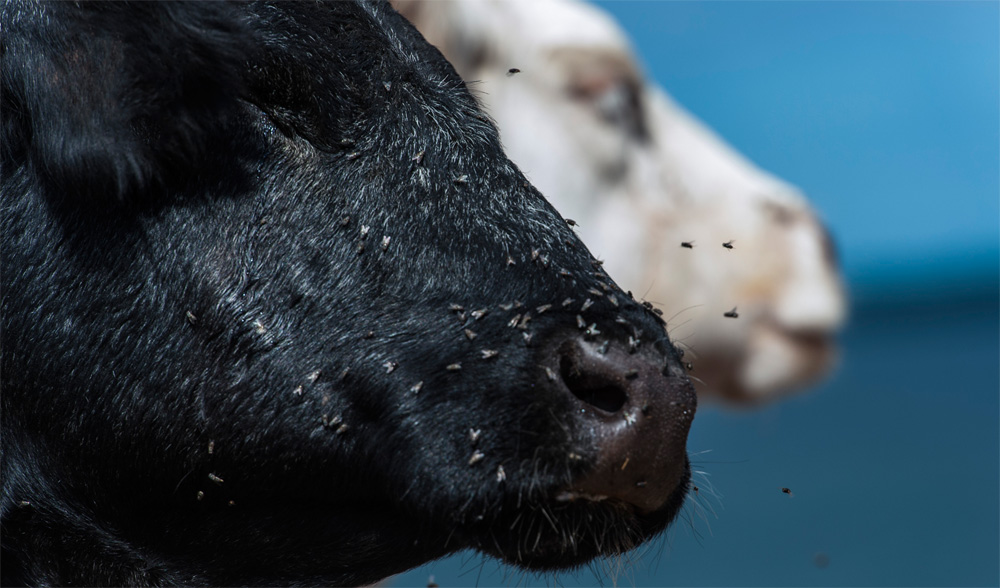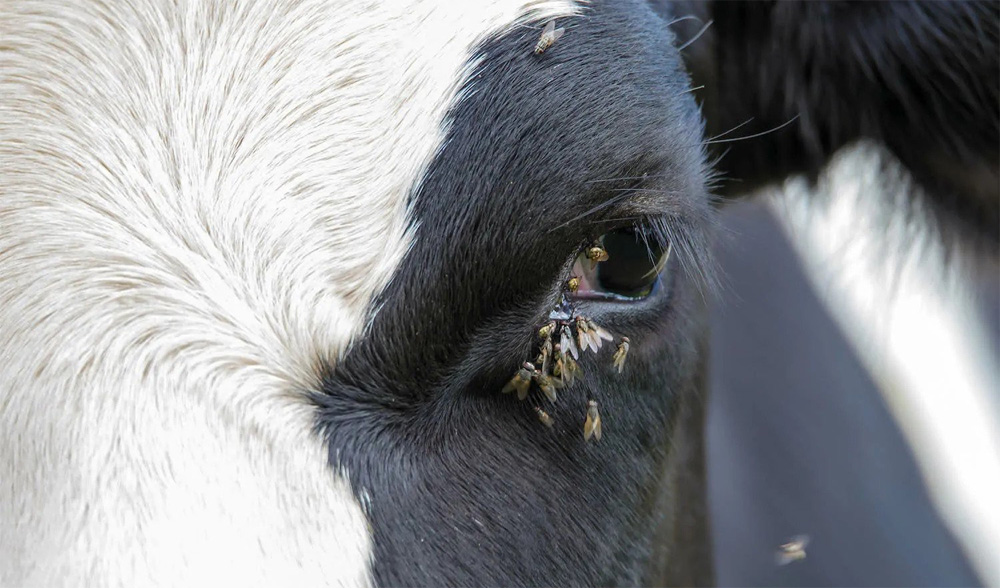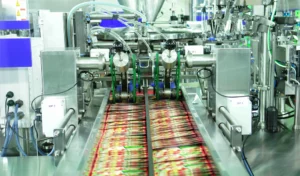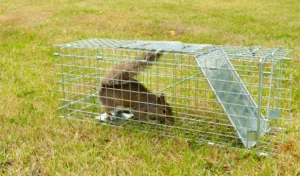The approach of summer will bring with it lush green grass, abundant sunshine, and a host of insects that thrive in the heat. Among the many external parasites that affect cattle, flies are particularly troublesome. With a variety of species to contend with, all of them can significantly impact the productivity and profitability of a cattle farm. Flies can hinder cattle performance by causing reduced grazing activity as they spend more time swatting at the pests than eating grass. So, fly control against all these types can be important for health of the cattle.

There will be much more flies in a cattle farm than they can be in a family. And fly control in a cattle farm means more. Cattle can be plagued by a variety of fly species, some of which feed on their blood, while others feed on secretions from their eyes and nose. Some flies lay eggs on the cattle, which develop into grubs under their skin. Certain fly species can also spread diseases from one animal to another. Examples of common fly species that irritate cattle include horn and face flies, deer and horse flies, stable flies, heel flies, and house flies.
In Wisconsin, cattle producers face the greatest challenges from horn and face flies, two primary species of flies that afflict their herds. Among these, horn flies are the most economically destructive insect pest to pastured cattle. Smaller in size than house flies, they are typically found on the backs, shoulders, sides, and bellies of cattle. Adult females lay their eggs in fresh manure, and the eggs hatch within 1-2 days. The entire life cycle takes between 10-20 days, depending on the temperature and time of year.
Horn flies spend the majority of their life on cattle, piercing their skin and feeding on their blood. This not only causes irritation to the cattle but also results in blood loss, ultimately reducing their weight gain. Additionally, horn flies can transmit certain blood-borne diseases to cattle.
Face flies have a similar appearance to the common house fly but are slightly larger and darker in color. Unlike horn flies, they do not bite cattle. Instead, they gather around their eyes, nose, and mouth to feed on normal secretions. Female face flies lay their eggs in fresh manure, and the complete life cycle takes around 21 days. Face flies are primarily responsible for the spread of pinkeye, a painful eye condition that reduces average daily weight gain and impairs vision. Pinkeye can lead to lower prices at the market due to visible eye problems. Therefore, controlling face flies is crucial in preventing the spread of pinkeye and ensuring cattle health and productivity.

Given the potential negative consequences, it’s crucial to understand more about fly control including horn and face flies. You can select our Pyrethroid Insecticides for killing and control of these types of flies. They are specially designed for livestock and poultry farms. Our Poultry Pest-killing Water Emulsion and Water Emulsion are produced with the advantages of broad spectrum, easy to use, safety and environmental protection, and low toxicity to humans. In addition to flies, they are also effective in killing and preventing mosquitoes, fleas, cockroaches, bedbugs and other pests commonly found in breeding sites. They are easy to use and will not add a great deal of work to the daily work of the farm. If you want to try some physical fly control solutions, you can also try our Hanging Fly Traps or Yellow Sticky Glue Traps. They have their own benefits for controlling flies.
In your fly control action, reducing face fly populations requires treating both cows and calves. However, younger cattle require more attention than adult cows and bulls as fly prevention can have a significant impact on their average daily gain, and they are more prone to pinkeye.
The presence of flies can adversely affect the productivity and profitability of a beef herd. B choosing our fly control products, you can significantly reduce the impact of fly and other pests on the growth of beef cattle. Feel free to Contact Us for more information.



